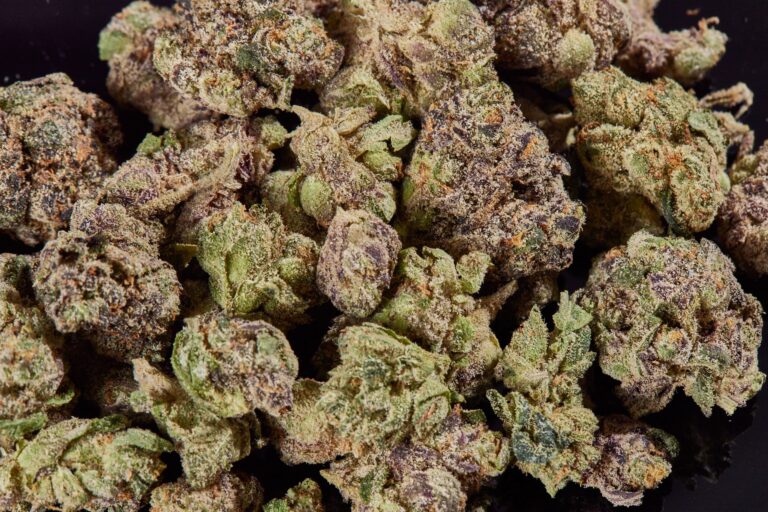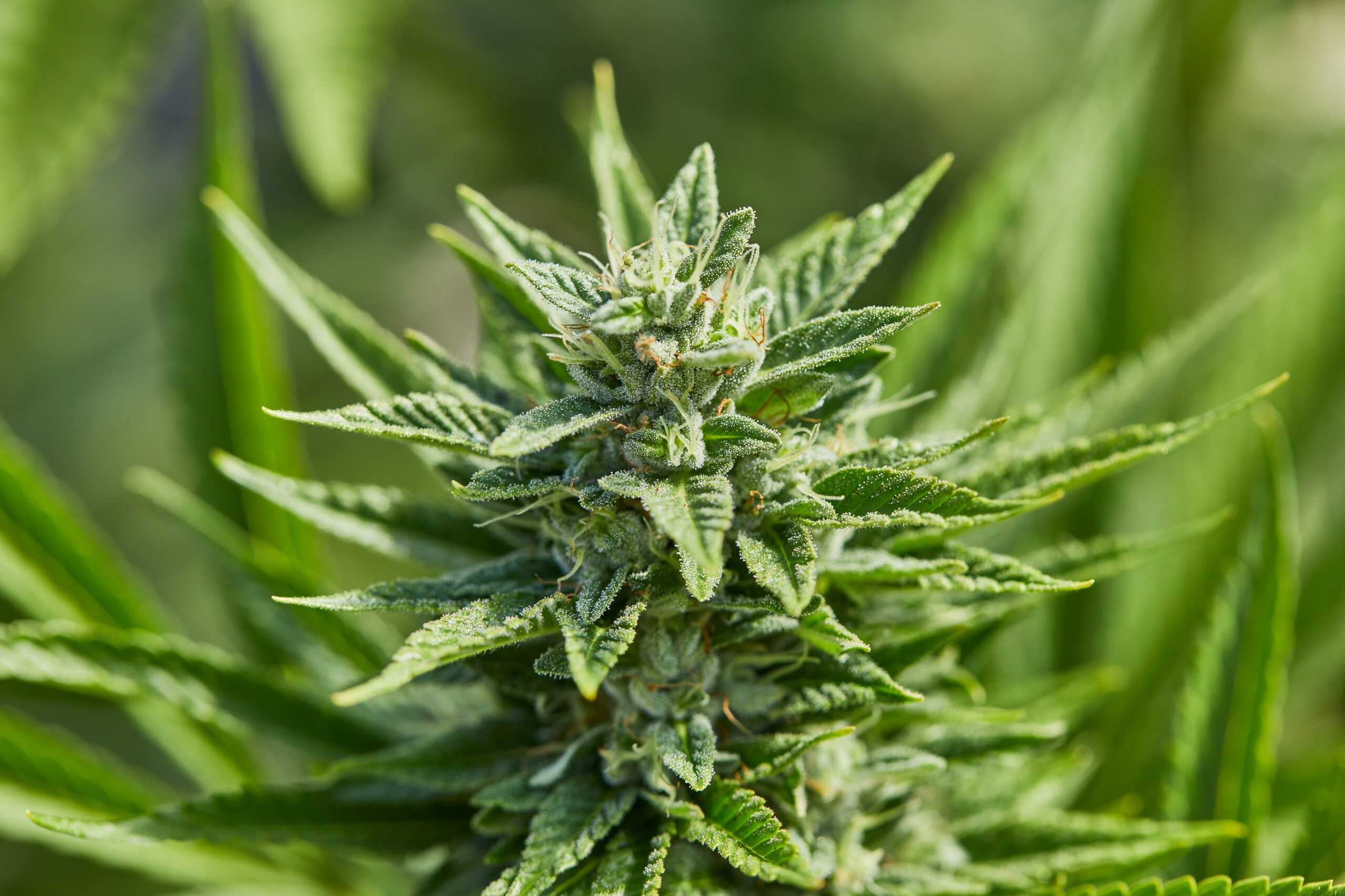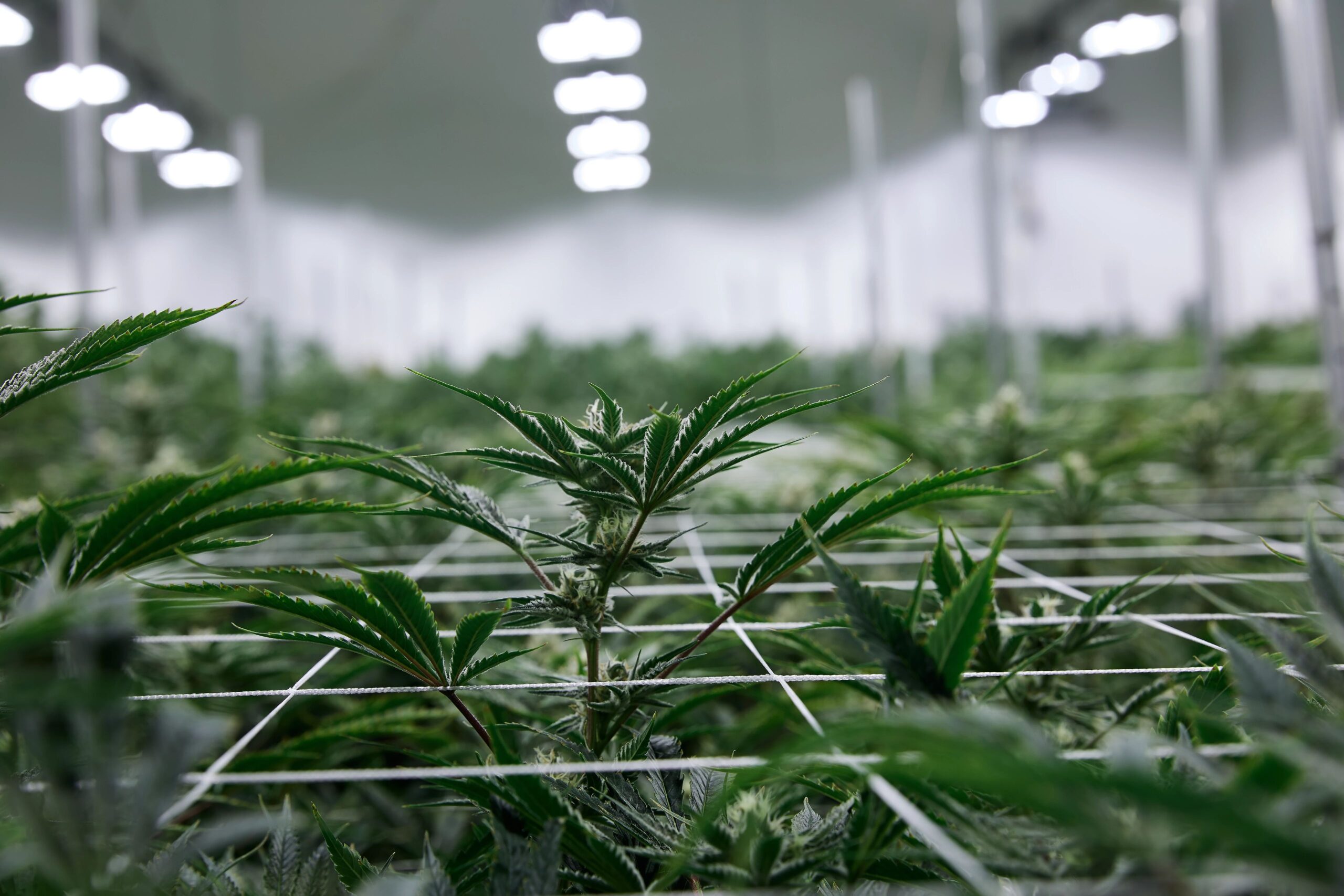Bract, calyx, cotyledon, pistil, stigma, cola — ever heard of these? They are neither a mark of disgrace (stigma) or soft drink (cola), but a tiny sampling of words specific to the cannabis plant's anatomy. They're also only some of the terms related to plant anatomy that the large majority of cannabis consumers have most likely never heard of.
Now, let's add one more word to your cannabis plant vocabulary: larf. Learn what larf is, how it relates to the cannabis plant, and what you can do with your extra larf.
What is larf?
Whether you find it fun or unappealing to say, larf is slang for the small or immature buds on the lower stems of the cannabis plant. They have a feathery or fluffy appearance and are found where less light is able to get through due to the emergence of colas — a stem that grows cannabis flower — in the plant's canopy above them. This lack of light hinders their growth and reduces their size, maturity, and desirability.
 Photo by: Gina Coleman/Weedmaps
Photo by: Gina Coleman/WeedmapsImage lightbox

When provided with proper light, larfs have the potential to become commercially viable and more potent, but since they're smaller and immature, they have lower market and aesthetic value. They also contain fewer aromatic and medicinal compounds like terpenes and cannabinoids like THC and CBD, which makes them less attractive to consumers.
Can you de-larf a cannabis plant?
Though larfs won't harm a cannabis plant's growth or affect the overall efficacy of the cannabinoids and terpenes in the colas, many cultivators prefer to remove them early on in a plant's growth in a process called “de-larfing.” Growers will typically trim them away to direct nutrients and energy to the more valuable, money-generating colas above and to increase the plant's overall productivity.
What can you do with your extra larf?
Just because larfs don't reach maturity doesn't mean they're useless. In fact, it's quite the opposite. If you've ever seen “popcorn bud” or "smalls" on a dispensary menu, that's larf, so named for the size —about the size of a popped kernel of corn. Popcorn bud contains cannabinoids and terpenes, though much less than regular flower.
 Photo by: Gina Coleman/Weedmaps
Photo by: Gina Coleman/WeedmapsImage lightbox

Though less desirable than full buds, larf has many uses:
- Cannabis-infused edibles: If you like to make your own edibles, use larf as a cheaper option to make cannabutter or boost the cannabis material you already have on hand. As you would with cannabis flower, decarboxylate the larf to unlock the cannabinoids, then add it to your favorite homemade treats. The same principle applies to carrier oils like coconut or olive oil, offering up both savory and sweet options.
- Joints or blunts: Using larf to fill your joints and blunts is an excellent way to affordably prolong the life of your stash. You could also use a whole popcorn bud in a bowl and smoke it from a pipe or bong.
Bottom line
The lack of cannabinoids and terpenes makes larf a more affordable, though probably not a better, option — fewer cannabinoids and terpenes will result in a less potent product. If you consume cannabis for a serious medical condition or even as a sleep or pain aid, larf may not be an effective option that will meet your needs, but it shouldn't be completely ignored.
Featured image by Gina Coleman/Weedmaps




